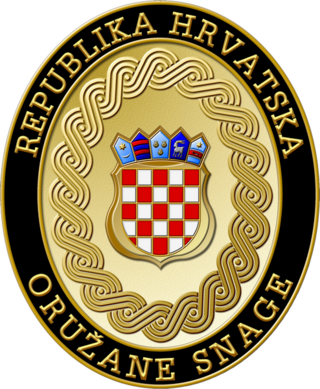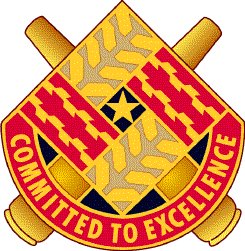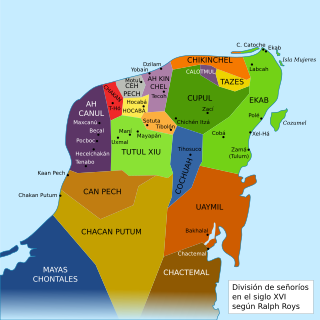
The Armed Forces of the Republic of Croatia are the military forces of Croatia.

The Pakistan Armed Forces are the military forces of Pakistan. It is the world's sixth-largest military measured by active military personnel and consist of three formally uniformed services—the Army, Navy, and the Air Force, which are backed by several paramilitary forces such as the National Guard and the Civil Armed Forces. A critical component to the armed forces' structure is the Strategic Plans Division Force, which is responsible for the maintenance and safeguarding of Pakistan's tactical and strategic nuclear weapons stockpile and assets. The President of Pakistan is the Commander-in-Chief of the Pakistan Armed Forces and the chain of command is organized under the Chairman of the Joint Chiefs of Staff Committee (JCSC) alongside the respective Chiefs of staffs of the Army, Navy, and Air Force. All branches are systemically coordinated during joint operations and missions under the Joint Staff Headquarters (JSHQ).

The Armed Forces of the Russian Federation, commonly referred to as the Russian Armed Forces, are the military of Russia. It is organized into three service branches—the Ground Forces, Navy, and Aerospace Forces—two independent combat arms, and the Special Operations Forces Command.
The United States Armed Forces are the military forces of the United States. The armed forces consist of six service branches: the Army, Marine Corps, Navy, Air Force, Space Force, and Coast Guard. All six armed services are among the eight uniformed services of the United States.
The Coordinating Committee for Multilateral Export Controls (CoCom) was established by the Western Bloc in the first five years after the end of World War II, during the Cold War, to put an embargo on Comecon countries. CoCom ceased to function on March 31, 1994, and the then-current control list of embargoed goods was retained by the member nations until the successor, the Wassenaar Arrangement, was established in 1996.

The Kamov Ka-27 is a military helicopter developed for the Soviet Navy, and currently in service in various countries including Russia, Ukraine, Vietnam, China, South Korea, and India. Variants include the Ka-29 assault transport, the Ka-28 downgraded export version, and the Ka-32 for civilian use.

The Buk is a family of self-propelled, medium-range surface-to-air missile systems developed by the Soviet Union and its successor state, the Russian Federation, and designed to counter cruise missiles, smart bombs, fixed- and rotary-wing aircraft, and unmanned aerial vehicles. In the Russian A2AD network, Buk is located between the S-200/300/400 systems above and the point defense Tor and Pantsir type systems below.

The ZU-23-2, also known as ZU-23, is a Soviet towed 23×152mm anti-aircraft twin-barreled autocannon. ZU stands for Zenitnaya Ustanovka – anti-aircraft mount. The GRAU index is 2A13.

The Xi'an JH-7, also known as the FBC-1 Flying Leopard, is a Chinese tandem two-seat, twin-engine fighter-bomber in service with the People's Liberation Army Naval Air Force (PLANAF), and the People's Liberation Army Air Force (PLAAF). The main contractors are Xi'an Aircraft Industrial Corporation (XAC) and the 603rd Aircraft Design Institute.

The I Marine Expeditionary Force is a Marine Air Ground Task Force (MAGTF) of the United States Marine Corps primarily composed of the 1st Marine Division, 3rd Marine Aircraft Wing, and 1st Marine Logistics Group. It is based at Marine Corps Base Camp Pendleton.
A unified combatant command, also referred to as a combatant command (CCMD), is a joint military command of the United States Department of Defense that is composed of units from two or more service branches of the United States Armed Forces, and conducts broad and continuing missions. There are currently 11 unified combatant commands, and each is established as the highest echelon of military commands, in order to provide effective command and control of all U.S. military forces, regardless of branch of service, during peace or during war time. Unified combatant commands are organized either on a geographical basis or on a functional basis, e.g., special operations, force projection, transport, and cybersecurity. Currently, seven combatant commands are designated as geographical, and four are designated as functional. Unified combatant commands are "joint" commands and have specific badges denoting their affiliation.

The United States Army Tank-automotive and Armaments Command (TACOM), and its subordinate Life Cycle Management Command (LCMC), headquartered at the Detroit Arsenal in Warren, Michigan, is part of the United States Army Materiel Command (AMC).

The United States Africa Command is one of the eleven unified combatant commands of the United States Department of Defense, headquartered at Kelley Barracks, Stuttgart, Germany. It is responsible for U.S. military operations, including fighting regional conflicts and maintaining military relations with 53 African nations. Its area of responsibility covers all of Africa except Egypt, which is within the area of responsibility of the United States Central Command. U.S. AFRICOM headquarters operating budget was $276 million in fiscal year 2012.

The Iranian Armed Forces, officially the Islamic Republic of Iran Armed Forces, are the combined military forces of Iran, comprising the Islamic Republic of Iran Army (Artesh), the Islamic Revolutionary Guard Corps (Sepah) and the Law Enforcement Force (Faraja).

The Special Forces Brigades of the Republic of Korea (ROK) are six special forces brigades and one oversea deployment group under the command and control of the Republic of Korea Army Special Warfare Command (ROK-SWC; Korean: 대한민국 육군 특수전사령부, 특전사; Hanja: 大韓民國陸軍 特殊戰司令部). These units were modelled after United States Army Special Forces (Green Berets).
The Toshiba–Kongsberg scandal, referred to as the Toshiba Machine Cocom violation case in Japan, unfolded during the final period of the Cold War. It centered on certain Coordinating Committee for Multilateral Export Controls (CoCom) member nations who transgressed foreign exchange and foreign trade laws by exporting machine tools to the Soviet Union. These tools, when combined with Kongsberg numerical control (NC) devices manufactured in Norway, contravened the CoCom agreement. The equipment allowed the submarine technology of the Soviet Union to progress significantly as it was being used to mill quieter propellers for Soviet submarines.

Ah Canul was the name of a Maya Kuchkabal of the northwest Yucatán Peninsula, before the arrival of the Spanish conquistadors in the 16th century.

A Bilateral Affairs Officer is a United States Army or Air National Guard officer serving as a conduit between the state and a 'partner country' as part of the National Guard State Partnership Program. The position is considered a diplomatic level assignment.

The United States Army Sustainment Command (ASC) is the primary provider of logistics support to units of the United States Army. It is a major subordinate command of United States Army Materiel Command (AMC).
Army Service Component Commands (ASCCs) are U.S. Army commands responsible for recommendations to the Joint Force Commander on the allocation and employment of U.S. Army forces within a unified combatant command (CCMD) or further assigned to a subordinate unified command.














